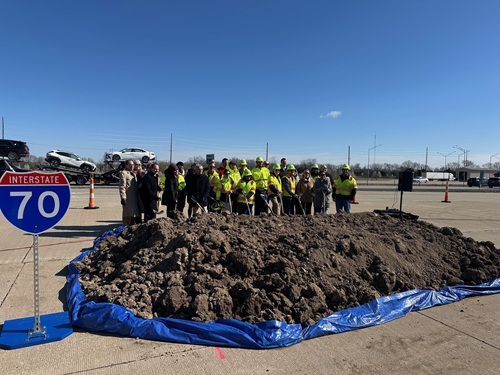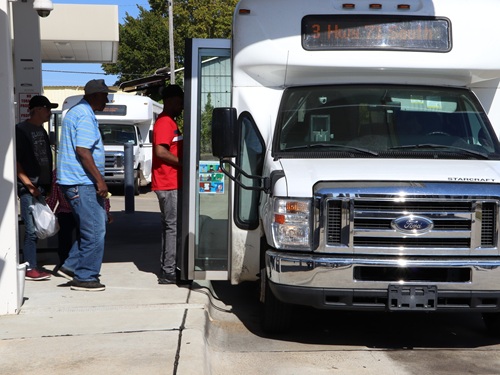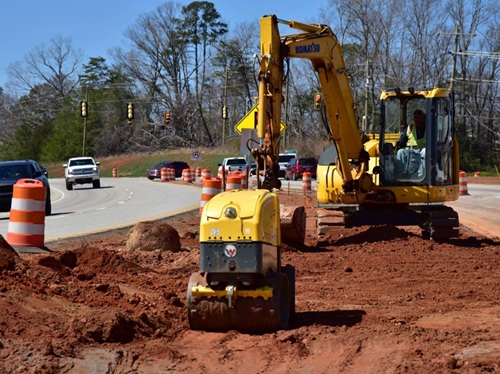The South Carolina Department of Transportation is seeking public feedback on its “Momentum 2050” statewide multimodal transportation plan, with comments due by April 19.
[Above photo by SCDOT]
The agency said its “Momentum 2050” outlines potential needs of South Carolina’s overall transportation system over the next 25 years, which includes the needs of cars, trucks, trains, public transportation, bicyclists, and pedestrians.
“Momentum 2050 is more than a plan – it is a road map for economic prosperity in South Carolina,” noted SCDOT Secretary Justin Powell in a statement.
“The road and bridge network in South Carolina supports the movement of freight and people across our state. We have to keep these critical arteries of commerce flowing,” he stressed. “We are designing a future that connects rural South Carolina to the global economy and provides access to job opportunities while continuing to promote the prosperity of our urban centers.”
[Editor’s note: In a related note, Jesse Hames – SCDOT District 4 special projects engineer – explains how he gives back to his community through his engineering work in the video below.]
Powell added that this work is not just being undertaken by SCDOT. “We’re working closely with key stakeholders like the Ports Authority, Department of Commerce and the Office of Resilience,” he noted. “We’re also connecting with the officials in your local communities and asking for input from our bike, pedestrian, transit and freight partners.”
Powell noted that four key points will drive the agency’s work on its Momentum 2050 plan:
- Improving safety: SCDOT aims to make roads safer for everyone who uses them, including bicyclists, pedestrians, and drivers in cities, towns, and the countryside.
- Preserving state-owned highways: SCDOT maintains over 41,000 miles of roads, which is the fourth largest system of state-owned roads in the country. “Maintaining existing roads that South Carolinians use every day is a priority,” Powell emphasized.
- Investing in interstate highways: SCDOT plans to keep investing in key roads, bridges, and highway interchanges to create new economic opportunities and support the jobs and businesses that are there now.
- Preserving state-owned bridges: SCDOT owns, operates, and maintains over 8,000 bridges. Properly caring for these bridges not only protects taxpayers’ investment but also improves resilience for such natural disasters as floods, hurricanes, and earthquakes.
Other state DOTs are engaged in similar long-range transportation planning initiatives.
For example, the Missouri Department of Transportation recently began soliciting input from the public to help update its Long-Range Transportation Plan or “LRTP” and the State Freight and Rail Plan or “SFRP” to address evolving needs and setting priorities.
“Input from our customers and stakeholders is critical when it comes to our long range freight and rail planning process,” said MoDOT Director Ed Hassinger in a statement. “We want to hear directly from those who use the transportation system and how it’s working for communities across the state. These plans allow us to set goals and determine the long-term priorities that are right for Missourians.”

[Editor’s note: The agency recently hosted a groundbreaking ceremony for the second major project within its “Improve I-70” program that aims to build a third lane in each direction on nearly 200 miles of I-70, from Blue Springs to Wentzville.]
MoDOT noted that the current LRTP was approved in June 2018 and will be updated in tandem with the current SFRP, which was approved in May 2022.
The new LRTP will build upon the goals outlined in the current plan – including making investments in infrastructure that keep travelers safe and spur economic growth, giving Missourians more transportation choices and reducing congestion on the current system – while determining the goals and direction of the next 25 years.
Concurrently, updates to the SFRP will include an analysis of the economic impact of Missouri’s public ports and passenger rail systems, an analysis of the truck parking system and the identification of critical supply chains that move the state’s economy.
 States
States
Nick Donohue Appointed Virginia’s Secretary of Transportation
December 12, 2025 States
States

